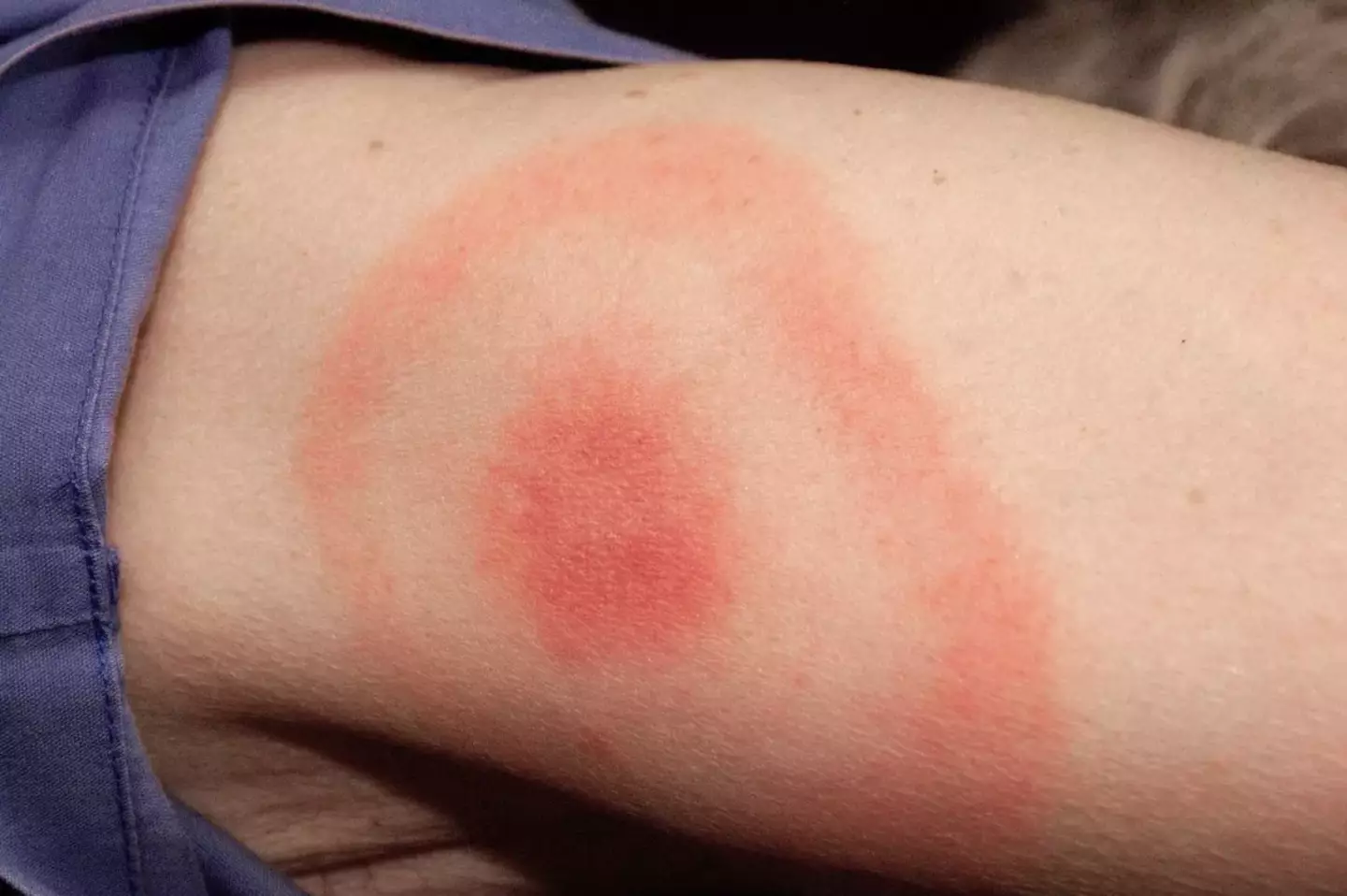
It's clear that we are well and truly in the midst of spring now and we've got a whole load of sunshine, holidays and outdoor antics to look forward to.
However, it's not all sunshine and roses (quite literally) as people have now been warned of a few downsides to the mercury rising this season - and it's a whole lot worse than combatting a nasty hayfever flare up.
For anyone creeped out by bugs, you may want to look away as a warning has now been issued over two specific species of tick to look out for right now following a notable surge in a particular disease notorious amongst celebs.
Advert
According to the Centers of Disease Control and Prevention, recent estimates suggest that approximately 476,000 people may be diagnosed and treated for Lyme disease each year in the US alone.

What is Lyme disease?
According to the NHS, Lyme disease is a 'bacterial infection that can be spread to humans by infected ticks'. The disease refers to the symptoms and health problems that develop as a result of the infection.
Advert
It's usually easier to treat if it's diagnosed early with one of the main early symptoms being a 'circular or oval shape rash' forming around a tick bite.
Some people also get flu-like symptoms several days or weeks after they were bitten by an infected tick, such as:
- A high temperature, or feeling hot and shivery
- Headache
- Muscle and joint pain
- Tiredness and loss of energy
 One of the main early Lyme disease symptoms is a 'circular or oval shape rash' forming around a tick bite (NHS)Why do so many celebrities have Lyme disease?
One of the main early Lyme disease symptoms is a 'circular or oval shape rash' forming around a tick bite (NHS)Why do so many celebrities have Lyme disease?

A whole load of major celebs have been diagnosed with the disease including the likes of; Yolanda Hadid, Bella Hadid, Justin Bieber, Ben Stiller, Amy Schumer, Shania Twain, Alec Baldwin, Avril Lavigne, Kelly Osbourne and Riley Keough - just to name a few.
Advert
Professor Paul Hunter, an expert in infectious diseases from the University of East Anglia, has previously explained what factors could make those in the spotlight more vulnerable to catching the infection known as Lyme disease.
Speaking to MailOnline, he suggested that A-listers' increased leisure time and greater access to wilder outdoor areas where ticks reside, than normal people, could simply make it a numbers game.
"If there is a rich and famous or class bias in this, it's probably because they spend more time walking around in wooded parkland, more money to go out to those areas, or have big homes with these sorts of places," he added.
Also, a lot of these celebs likely live across the pond in the US where Lyme disease is known for being quite prevalent.
Advert
The expert continued: "As you're walking along the ticks jump on your legs and crawl their way up... have a blood feast and give you Lyme disease.
"If you go walking in these sorts of places the best thing to do is check, when you get home, that you don't have any ticks on you and if you have remove them safely."

What two ticks do you need to look out for?
Well, according to University of Rhode Island professor, Thomas Mather, tick sightings have increased big time in the last two weeks (via USA Today).
Advert
One of the two main tick species to be on alert for in the States is the black-legged tick, also called the deer tick or the bear tick.
These little critters, which are mainly found in the eastern half of the US along with the Midwest, the Mayo Clinic explains, can spread parasites, bacteria and a virus with its bite.
Not only able to carry and spread Lyme disease, a black-legged tick bite can also cause a number of other diseases including anaplasmosis and babesiosis.
And second on the list is the dreaded lone star tick which received their name due to the silvery-white star-shaped spot on their backs.

A bite from one of these can be particularly concerning given the fact that their bites have been associated with some people developing a red meat allergy called alpha-gal syndrome.
This happens because when a lone star tick, which are mainly found in the Southern and Eastern US, feeds, it transfers a sugar molecule called alpha-gal into the body.
"In some people, this molecule triggers a reaction from the body's immune system," the Mayo Clinic warns. "It causes an allergic reaction to certain meats, such as beef, pork or lamb, but not poultry or fish.
"It also may cause reactions to other foods, such as dairy products or gelatins, that come from mammals."
In some extreme cases, Mathers warns it can possibly cause anaphylaxis, which is a potentially life-threatening allergic reaction.
As for how to combat tick bites, he suggests the 'three T's', which is wearing tight clothing treated with repellent spray and tuck your shirt in.